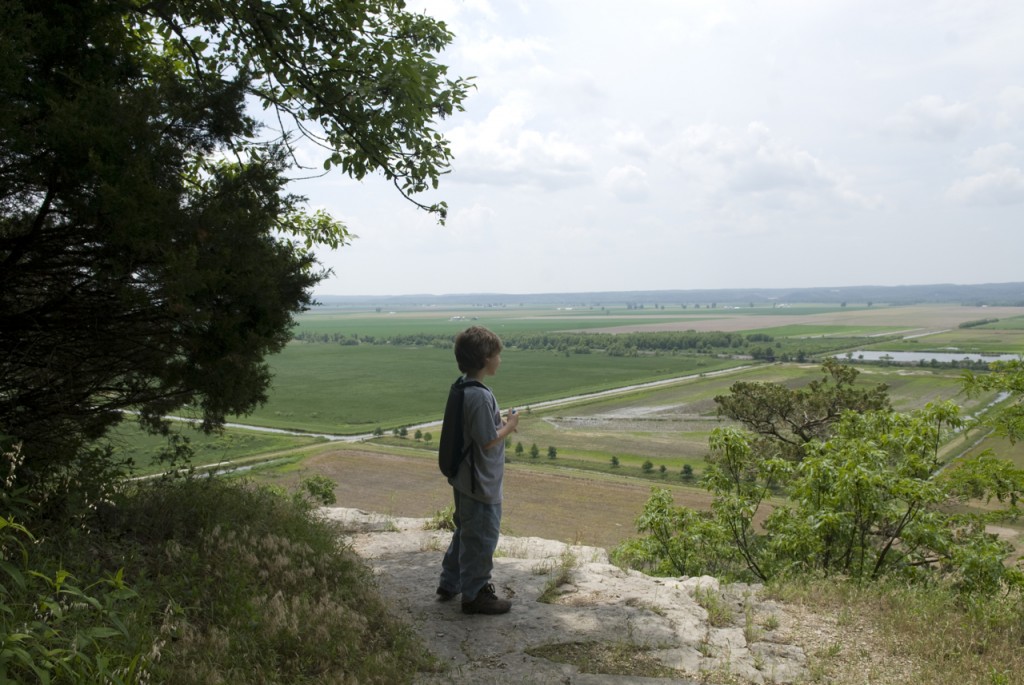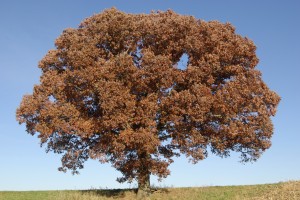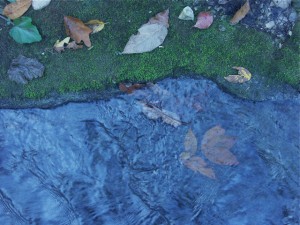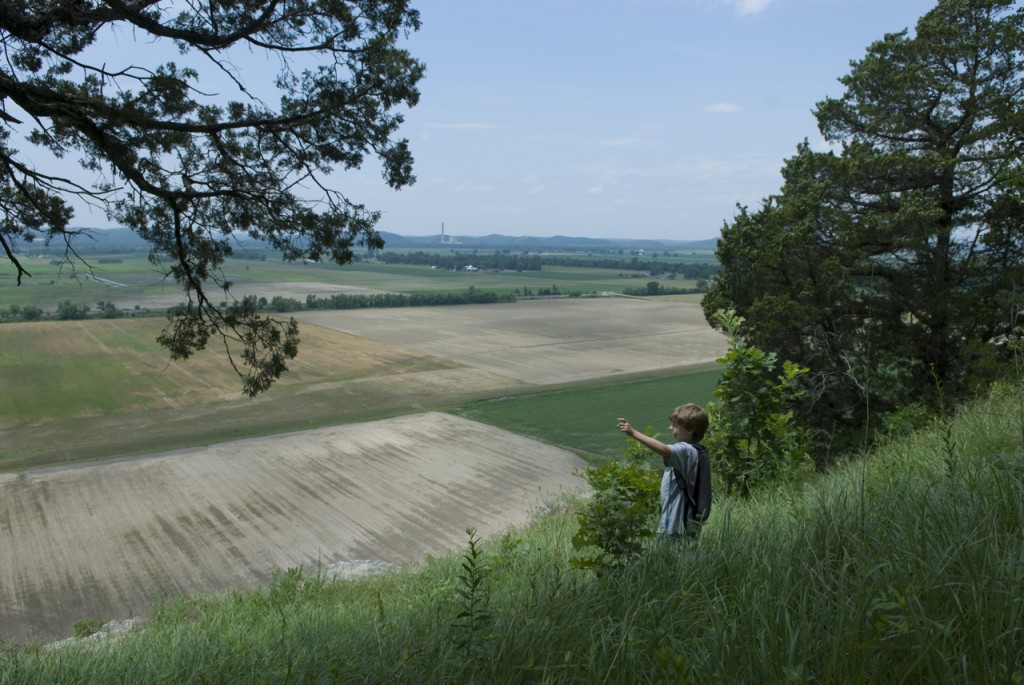Landscape as Humanscape: Guardians and Caretakers?
In the past 300 years, people have transformed Monroe County’s landscape. In pre-European settlement times, 86% of Monroe County’s 255,000 acres was forested, including portions of the American Bottoms and most of the uplands. There were approximately 13,000 acres of prairie — five percent of county lands — with a large swathe of tall grass prairie along Prairie du Long Creek west of Hecker, a large prairie at New Design, east of Burksville, and extensive patches of wet and dry prairie on the Mississippi River bottomlands. Three centuries ago, eight  percent of the county — some 20,000 acres — was wetland, mostly along the Mississippi and Kaskaskia floodplains.
percent of the county — some 20,000 acres — was wetland, mostly along the Mississippi and Kaskaskia floodplains.
Native American peoples who lived here certainly altered the landscape, primarily by periodically setting fire to prairies and woodlands. Horticultural practices with associated settlement areas occupied limited spaces and were used for only a few years before relocation to a new area. When our Euro-American predecessors came here they began a series of dramatic alterations to the landscape, timbering large swathes of woodlands, plowing prairie, and draining marshes and wetlands to plant agricultural crops. Few areas, even the tops of the bluffs or the wettest soils of ancient lake and marsh beds, were deemed so inaccessible, so unworkable, or so lacking in exploitable reward that some form of human intervention did not occur.
Our forefathers largely looked at the transformations they made as a battle against nature and success as progress away from it. By and large they declared victory as acres devoted to wheat and corn, small grains, orchards, market crops and livestock increased exponentially during the nineteenth century. Throughout the later half of the 20th century acreage devoted to corn, wheat, milo and especially soy increased and replaced most mixed farming operations. As the need for even more production and greater tractor power along with newer hybrids made possible an even stronger focus on these crops,
hedgerows and even the space once occupied by traditional shade trees marking rest times and field edges were brought into agricultural use. The natural landscape and wildlife within it was what was left over, or, perhaps, what was left behind.
Today, 20% of the county is forestland, with the largest contiguous block coursing along the bluff lands overlooking the Mississippi. Today only 156 of the original 13,000 acres of native prairie remain, all perched above the cliff face along Bluff Road. And, today, only one percent of county land is classified as wetland. Our woodlands, prairie remnants and wetlands, collectively make up our “natural areas,” and are what wildlife largely depends upon. While all the peoples who have lived on the land have altered it, our all encompassing and continuing transformations have resulted in a humanscape rather than a landscape.
The fate of wildlife and our remnant natural areas is in our hands. As heirs to the humanscape we may choose to manage our lands for the benefit of wildlife and take up our responsibility as caretakers.
We can prevent further fragmentation of natural habitats. In reducing woods, wetlands, and grasslands for development and modern industrial agriculture, we have created isolated pockets of natural habitats to host the myriad of wildlife we enjoy. These small islands of habitat are not self-sustainable, plant and animal genetic diversity cannot be perpetuated, and smaller pockets of nature are more vulnerable to disturbances. We can stop creating more isolation and, even, reduce the effects of past fragmentation by bringing nature back home – native trees, shrubs, flowers and grasses — into our gardens, backyards, field edges, woodlots and public spaces.
We can help keep our oak-hickory woodlands oak-hickory woodlands. The reduction in size of acreages and opening up for development within our forests has allowed Sugar Maple, a bottomland native, to gain a foothold in many wooded tracts. The maples then over-shade and stifle oak acorn and hickory nut regeneration. When our oaks and hickories reach senescence and die they too often are replaced by a predominantly maple forest. And a maple woodlot does not produce foodstuffs to sustain our wild game populations.
We can reduce the spread of non-native invasive plant species that overcrowd and outcompete native plants disrupting and even eliminating the natural plant-animal food chain. There are plenty of non-native plants in the county that do no harm and in fact are of great benefit such as Asian soy and Mexican corn, to name the two economic bedrocks of our agricultural prosperity. But some non-native plants, largely because they have no natural predators, simply take over. They provide little to no human benefit but grow so rampantly that they create their own monoculture that is a wildlife desert.
Bush honeysuckle is clearly the best example in Monroe County. It has over taken the understory in many wooded areas, shaded out native tree recruitment, reduced the supply of mushrooms and wildflowers, and created impenetrable landscapes precluding a walk in the woods. And, while birds and small mammals may eat the berries, thus spreading bush honeysuckle seeds ever further, they do so because their natural foods are increasingly in short supply. Worse still for wildlife, the nutritional value of honeysuckle fruits is only about half that of native berries.
The humanscape – the legacy left to us — means a natural world ever more dependent on us for survival. Only our conservation practices and concerted actions will determine the longevity and sustainability of our area’s wildlife and remnant natural areas. We are no longer just owners of land but more than ever now are also guardians.
Clifftop, a local nonprofit organization, is focused on preserving and protecting area bluff lands.
A version of this article appeared in the July 2nd 2010 edition of the Monroe County Independent.
© 2010 all content rights reserved, Clifftop NFP.
Comments are currently closed.




